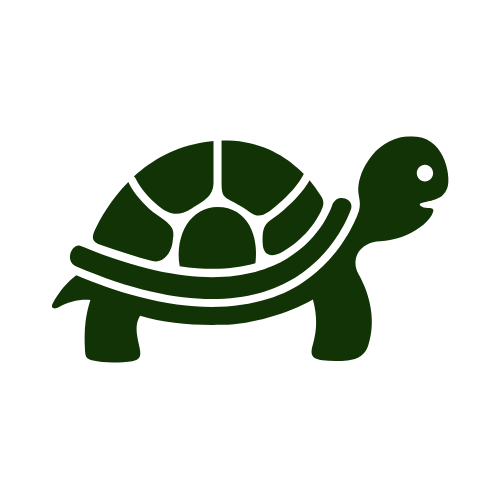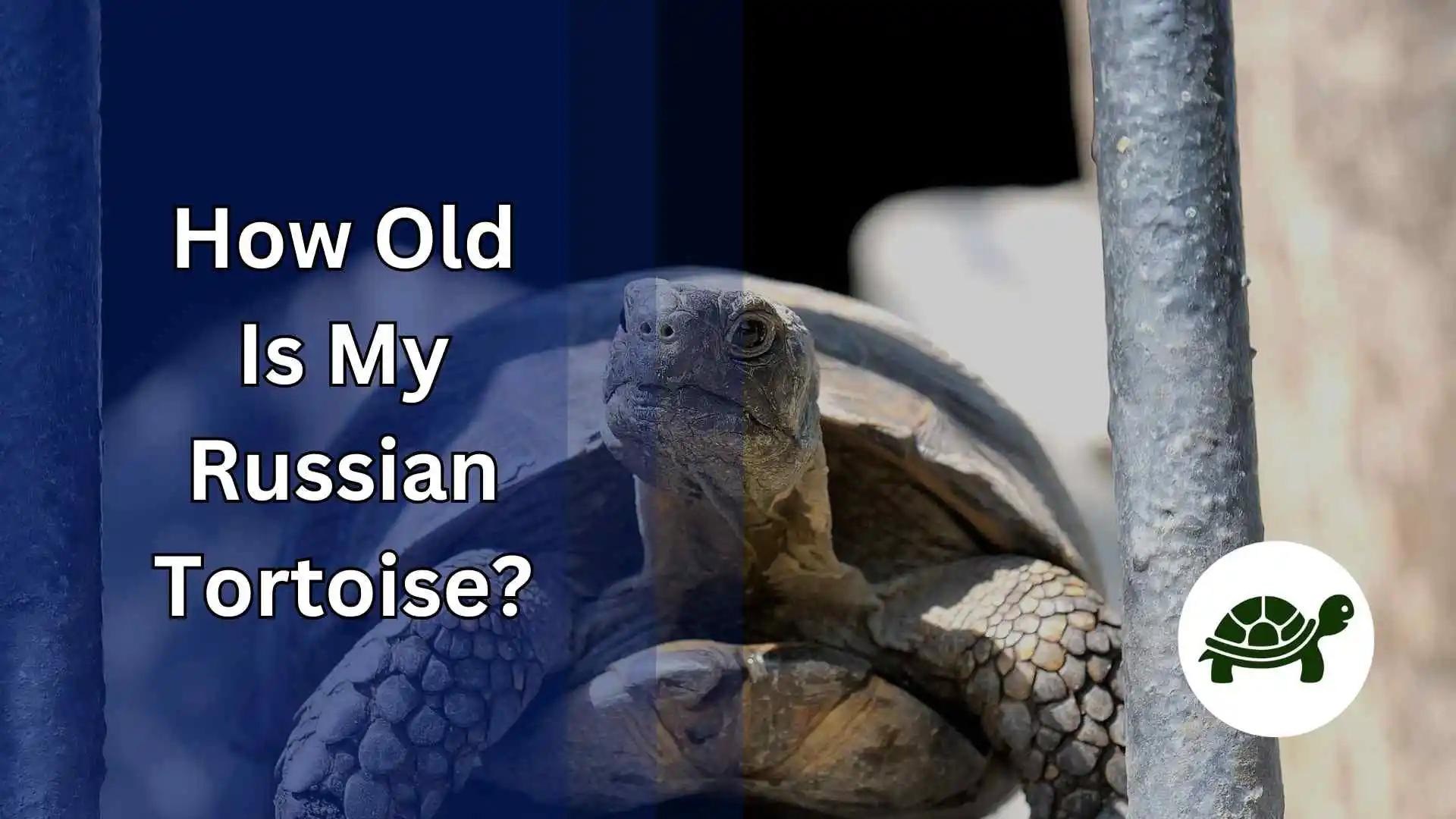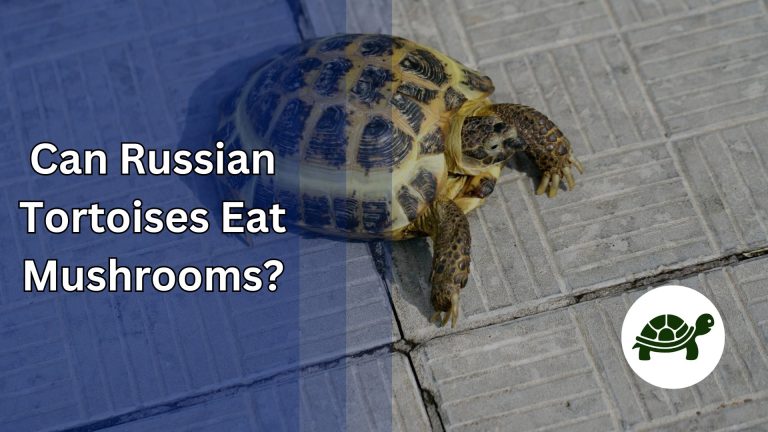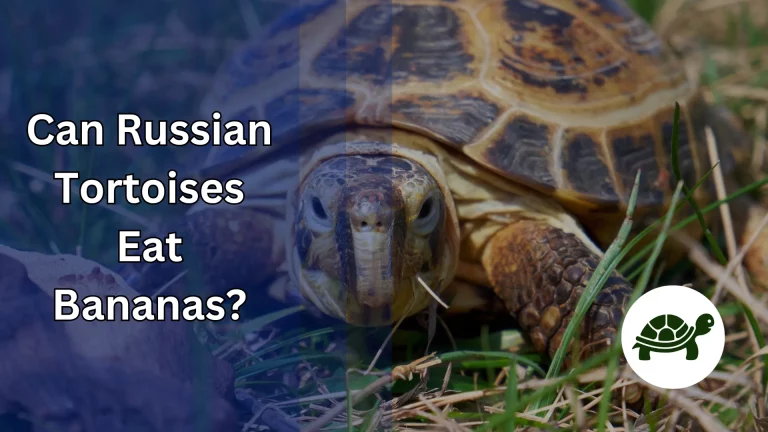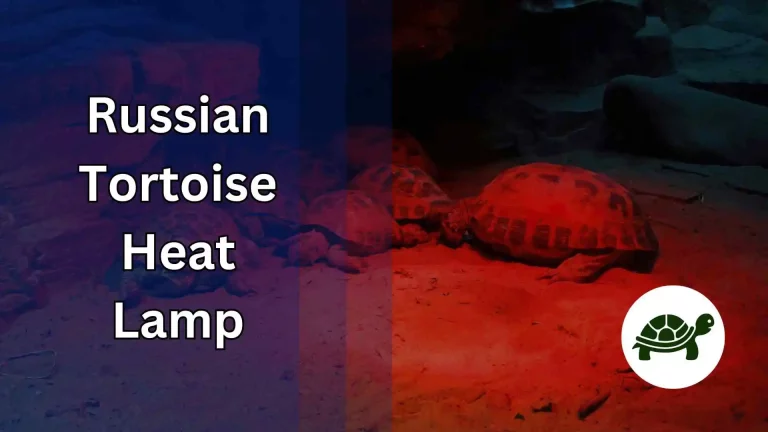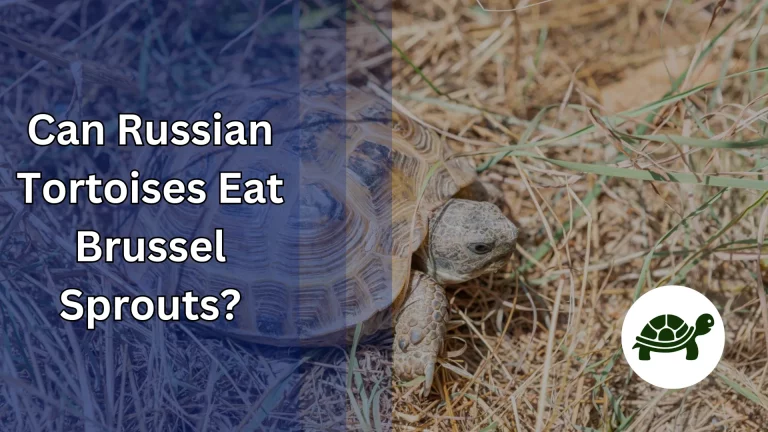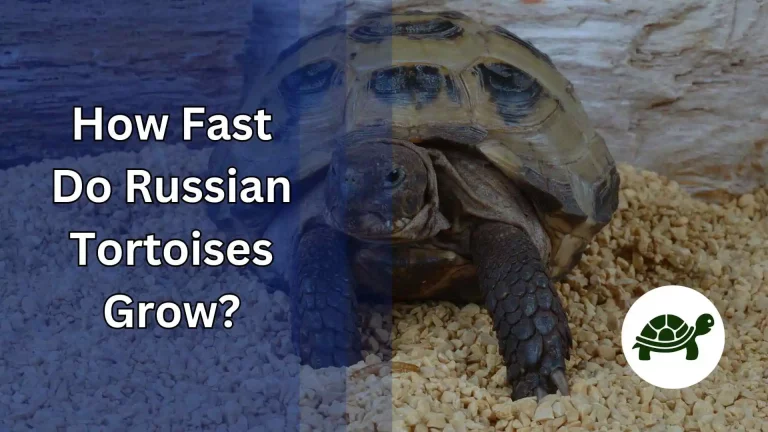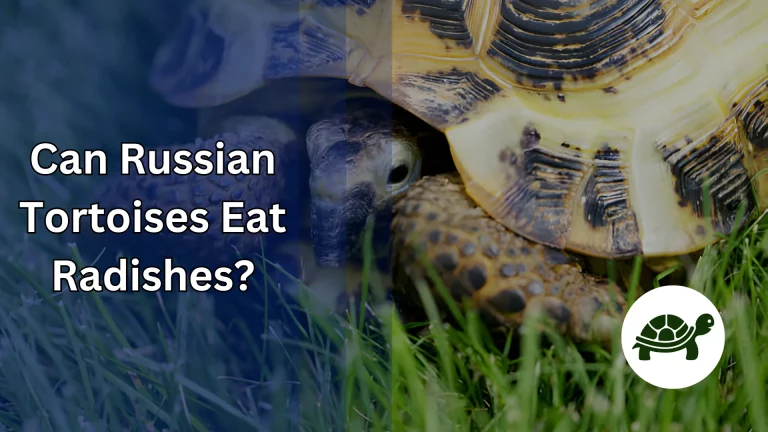How Old Is My Russian Tortoise? – All You Need To Know
Have you ever looked at your Russian Tortoise and wondered, “how old is my Russian tortoise exactly?” It’s a common question among tortoise enthusiasts, and for good reason. Understanding the age of your shelled companion is not only fascinating, but it also holds significance for their health and well-being. Much like us, the needs of a tortoise can change over time, making age an important factor in providing the best care possible.
Determining the age of a Russian Tortoise might seem like a riddle wrapped in a mystery inside an enigma, much like the vast stretches of the Eurasian steppes they originate from. However, while it may not be as straightforward as determining the age of a dog or cat, with a keen eye and the right knowledge, it is possible to make an educated guess. Whether you’ve recently adopted a Russian Tortoise or have been a long-time caretaker, having an insight into your tortoise’s age can enhance your understanding and care approach.
In this comprehensive guide, we’ll unravel the methods to estimate the age of a Russian Tortoise, debunk some common myths, and provide tips for ensuring a healthy and fulfilling life for your tortoise at any age. Whether you are a first-time tortoise guardian or a seasoned veteran, this guide aims to shed light on the age-old question – How old is my Russian Tortoise? So, embark on this exploratory shell journey to uncover the age mysteries of your Russian Tortoise!
Understanding the Russian Tortoise’s Lifespan
When delving into the age mystery of your Russian Tortoise, a great starting point is understanding their typical lifespan. Native to the rugged and arid regions of Afghanistan, Pakistan, Iran, and Russia, these hardy creatures have adapted to endure harsh conditions, contributing to their relatively long lifespan. On average, a well-cared-for Russian Tortoise can live between 25 to 40 years, sometimes even longer with exemplary care. Their longevity is one of the many factors that make them such appealing companions for reptile enthusiasts.
The lifespan of a Russian Tortoise is often intricately tied to their health and the care they receive. A balanced diet, regular veterinary check-ups, and a suitable habitat can significantly contribute to their longevity. Moreover, being aware of your tortoise’s age can assist in tailoring their diet and habitat conditions, ensuring they remain healthy and content throughout the various stages of their life. This nuanced understanding can lead to a more enriching life for your tortoise, enhancing the bond you share.
But how does one go about determining the age of a Russian Tortoise? While it may pose a challenge, several methods and indicators can provide useful insights into your tortoise’s age. In the sections to follow, we will explore some common and some not-so-common techniques to estimate the age of your tortoise, shedding light on this intriguing aspect of Russian Tortoise care. Whether young or old, every day is a step towards a fulfilling life for your tortoise, and understanding their age is a giant leap in the right direction.
Common Myths About Aging Russian Tortoises
When it comes to determining the age of Russian Tortoises, numerous myths have found their way into the common narrative. Unveiling the truth behind these myths is not only fascinating but essential for the accurate age determination and overall well-being of your tortoise. Let’s debunk some of the common misconceptions that surround the aging process of Russian Tortoises.
One prevalent myth is that the size of a Russian Tortoise directly corresponds to its age. While it’s true that younger tortoises are generally smaller than their older counterparts, many factors such as diet, habitat, and health can significantly impact a tortoise’s size. Two tortoises of the same age might vary in size due to differences in their living conditions and health. Therefore, relying solely on size can lead to inaccurate age estimations and could potentially misguide your care approach.
Another common misconception is that older Russian Tortoises are less active. Aging might bring about a decrease in activity levels, but a sudden or severe drop in energy could indicate underlying health issues. It’s crucial to understand that every tortoise is unique, and what holds true for one may not for another. Observing behavioral changes in correlation with other factors can provide a more accurate insight into your tortoise’s age and health.
In the quest to determine “how old is my Russian Tortoise,” it’s vital to separate fact from fiction. As we delve deeper into the proven methods of age determination in the following sections, you’ll gain a clearer understanding and be better equipped to provide a nurturing environment for your tortoise, regardless of its age. Being well-informed is the first step toward ensuring a happy and healthy life for your beloved shelled companion.
Methods to Determine the Age of a Russian Tortoise
Embarking on the journey to discover the age of your Russian Tortoise is akin to stepping into a realm filled with curiosities. Though it may seem daunting initially, equipped with the right knowledge, you can get closer to unraveling this enigmatic facet of your shelled companion. In this section, we’ll venture through the primary methods that can provide a glimpse into the age of a Russian Tortoise.
1. Examination of the Shell (Growth Rings Analysis):
One of the most traditional methods to estimate a tortoise’s age is by examining the growth rings on its shell. Much like the rings of a tree, a tortoise’s shell has concentric rings that can provide a ballpark estimate of its age. Each ring represents a period of growth, with a new ring forming typically each year. However, the accuracy of this method can vary. Factors such as diet, habitat conditions, and health can influence the growth rate, leading to irregular ring formation.
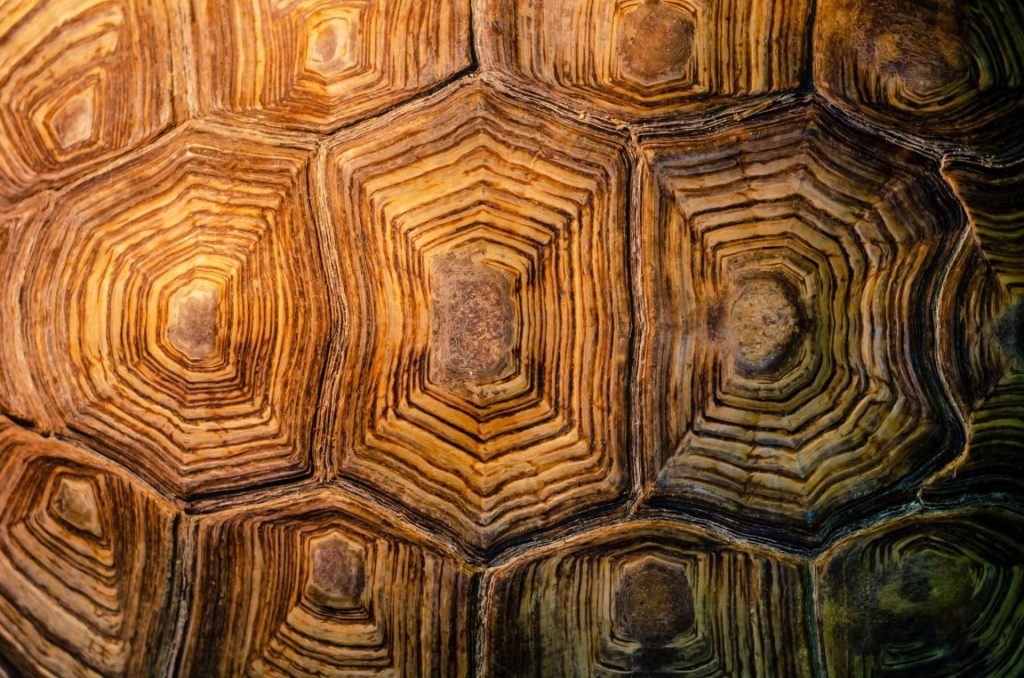
How to Examine Growth Rings:
- Ensure your tortoise is comfortable and secure before starting the examination.
- Gently clean the shell with a soft brush to remove any dirt or debris.
- Carefully count the rings on one of the scutes (sections of the shell).
- Remember, this method provides an estimate, not an exact age.
2. Veterinary Assessment:
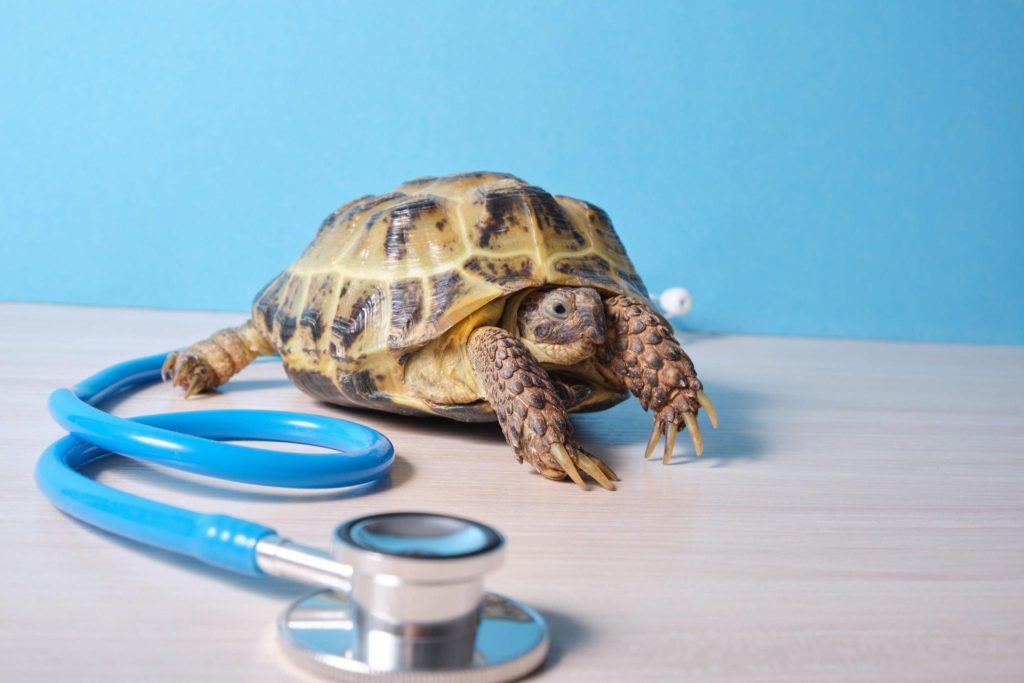
A more reliable method of age determination is a professional veterinary assessment. Veterinarians specialized in reptiles possess the expertise and experience to provide a more accurate age estimation. This assessment might include a thorough examination of the tortoise’s shell, eyes, beak, and overall health. Your vet may also inquire about your tortoise’s history, previous living conditions, and dietary habits to make a more educated guess regarding its age.
Preparing for a Veterinary Assessment:
- Gather any known history or records of your tortoise.
- Be ready to discuss its dietary habits, activity levels, and any noticeable changes in behavior.
- Regular veterinary assessments are crucial for your tortoise’s long-term health, irrespective of the age quest.
By combining a personal examination with professional veterinary insights, you can develop a well-rounded understanding of your Russian Tortoise’s age. As you unravel the age mystery, you’re not only satisfying your curiosity but also gaining vital knowledge to ensure a thriving life for your tortoise. Armed with this information, you can tailor your care approach to meet the unique needs of your Russian Tortoise at different life stages, forging a deeper bond with your cherished companion.
Factors That Affect a Russian Tortoise’s Growth
The growth journey of a Russian Tortoise is a fascinating tale, woven together by various factors that either propel or hinder its growth. As a tortoise guardian, understanding these factors can provide invaluable insights into the life and age of your shelled companion. This understanding can pave the way for tailored care that fosters healthy growth and a fulfilling life for your Russian Tortoise.
Diet
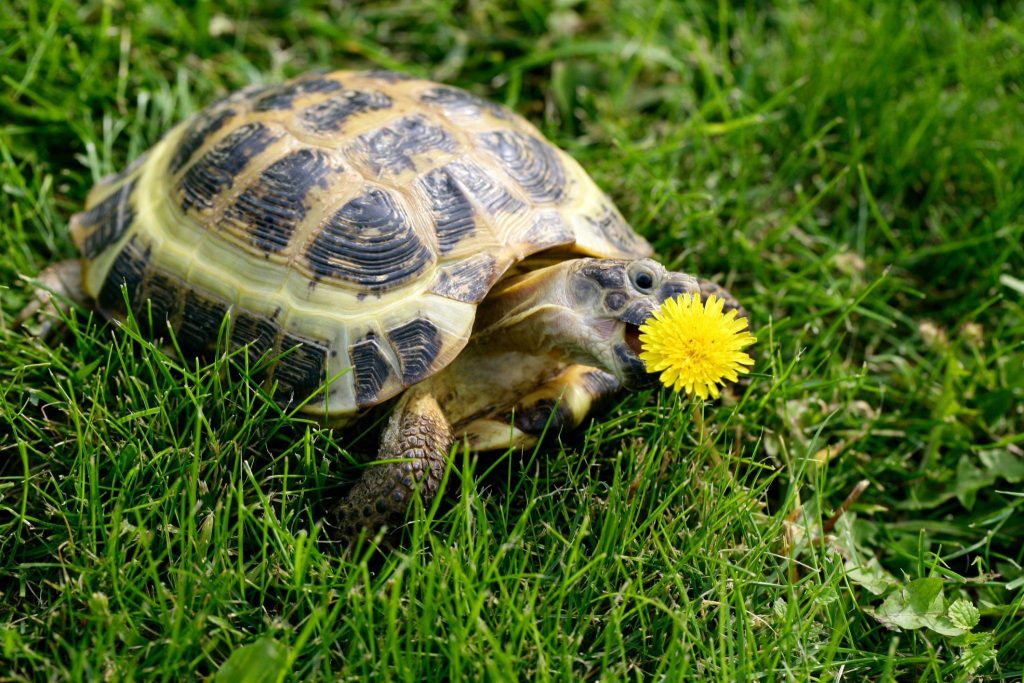
The dietary choices you make for your tortoise play a pivotal role in its growth and overall health. A balanced diet rich in essential nutrients promotes steady growth, while a poor diet can lead to stunted growth or other health issues. Russian Tortoises are primarily herbivores and thrive on a varied diet of leafy greens, vegetables, and occasional fruits. Ensuring a nutrient-rich diet, with a good balance of calcium and phosphorus, is imperative for the healthy growth and development of your tortoise.
Environment
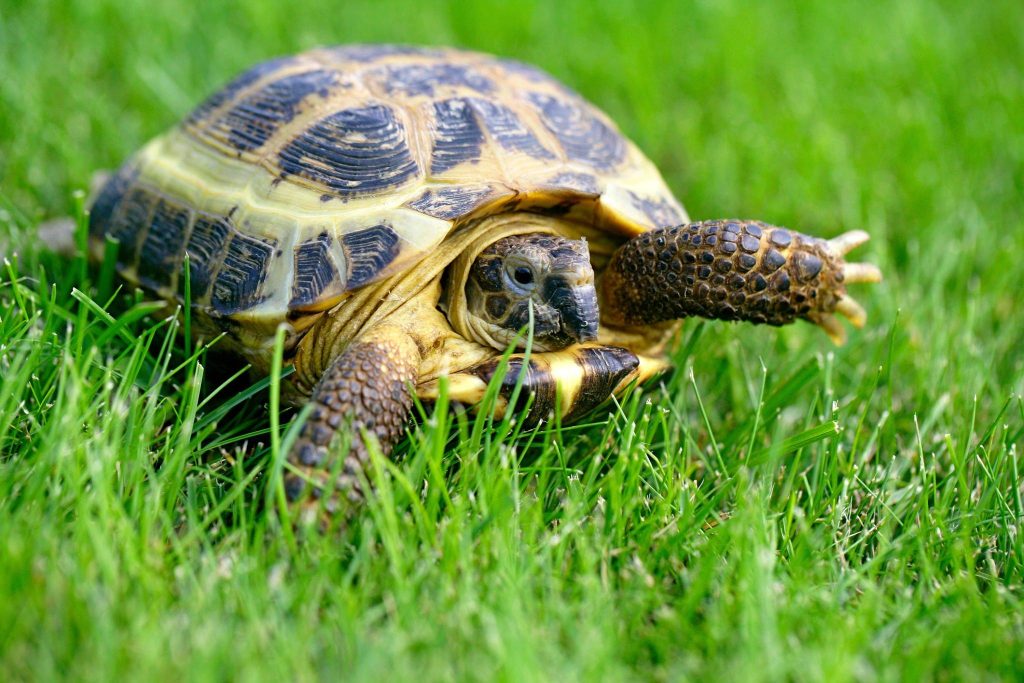
The environment in which a Russian Tortoise lives significantly impacts its growth trajectory. A suitable habitat that mimics their natural arid environments, with appropriate temperatures, humidity levels, and space to roam, can foster healthy growth. Conversely, an inadequate habitat can stress your tortoise, hindering its growth and potentially leading to health issues. Regular exposure to natural or UVB light is also crucial for proper shell growth and overall health.
Health
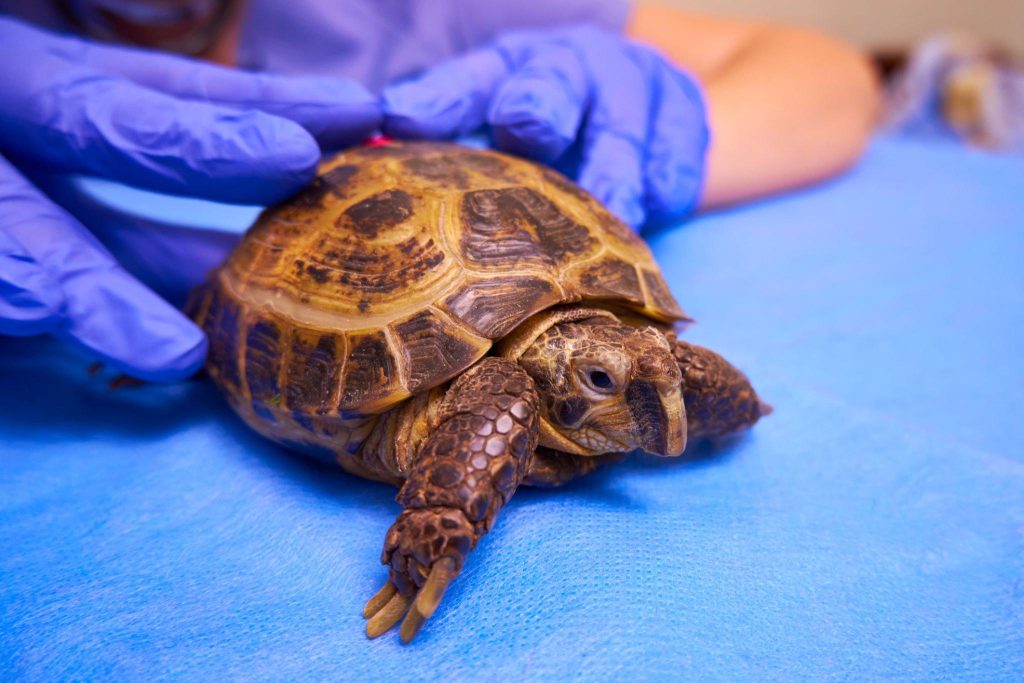
A Russian Tortoise’s health is a direct reflection of its growth. Healthy tortoises are likely to grow at a steady pace, whereas health issues can stunt growth. Regular veterinary check-ups can help catch and address health concerns early on, ensuring your tortoise remains on a healthy growth path. Moreover, addressing any parasitic infections, respiratory issues, or other common tortoise ailments promptly can significantly contribute to ensuring a thriving life for your tortoise.
As you delve deeper into the world of Russian Tortoise care, you’ll discover that each factor influencing growth unveils a layer of understanding that’s instrumental in nurturing a healthy and content tortoise. By paying heed to these growth-affecting factors, you’re not only working towards deciphering the age puzzle but also creating a wholesome environment that celebrates each growth milestone of your Russian Tortoise.
Tips for Keeping Your Russian Tortoise Healthy at Any Age
The quest for nurturing a healthy Russian Tortoise transcends age, weaving a narrative of attentive care and enriched companionship. Whether your tortoise is a sprightly youngster or a wise elder, certain care essentials remain constant. In this segment, we’ll journey through some timeless tips that can contribute to the well-being of your Russian Tortoise, ensuring they thrive through every age and stage.
Balanced Diet
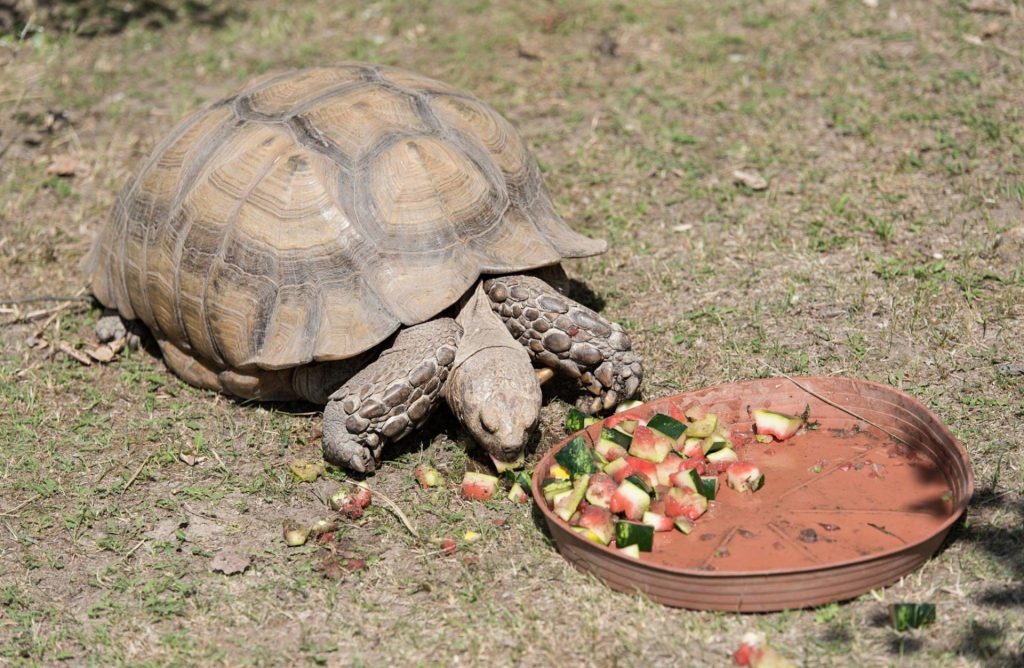
Embark on a quest for dietary excellence by ensuring your Russian Tortoise receives a balanced and nutrient-rich diet. A varied diet comprising leafy greens, vegetables, and occasional fruits is vital for their growth and health. Supplements like calcium and vitamin D3 can also be instrumental in promoting shell health and overall well-being.
Regular Veterinary Check-ups
A routine veterinary check-up is like a window into your tortoise’s health, providing crucial insights that can guide your care approach. Whether it’s identifying potential health issues early or receiving tailored dietary advice, regular veterinary visits are a cornerstone of proactive tortoise care.
Habitat Enrichment
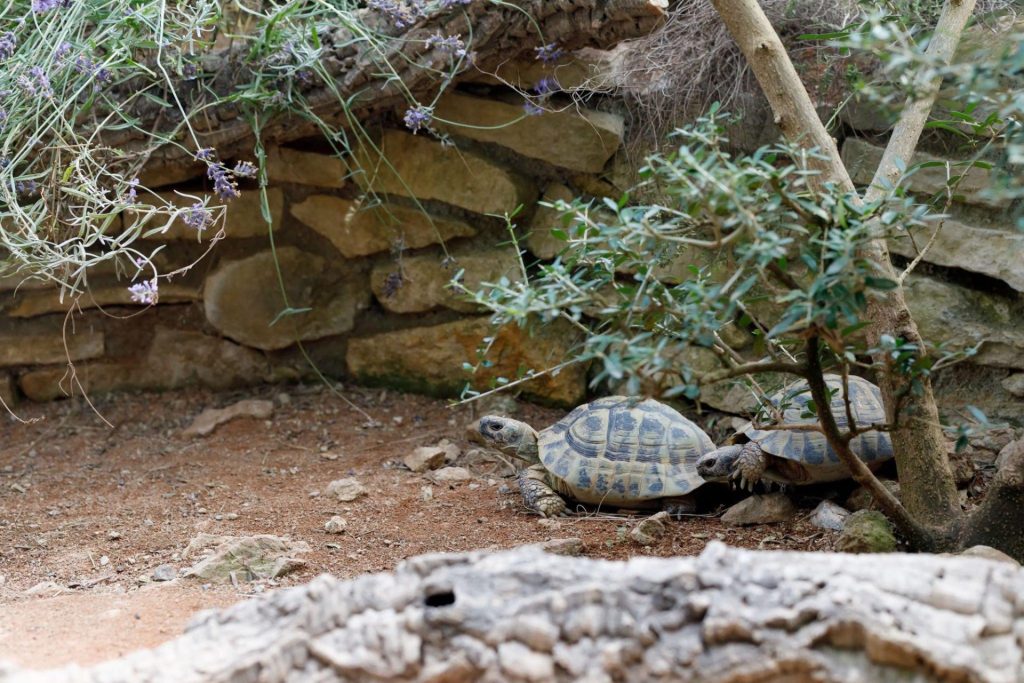
Creating a stimulating environment that mirrors their natural habitat can significantly enhance the quality of life for your Russian Tortoise. Ensure they have ample space to roam, explore, and bask. Implementing a proper heating and lighting system, including UVB lights, is crucial for their shell and bone health.
Hydration and Cleanliness
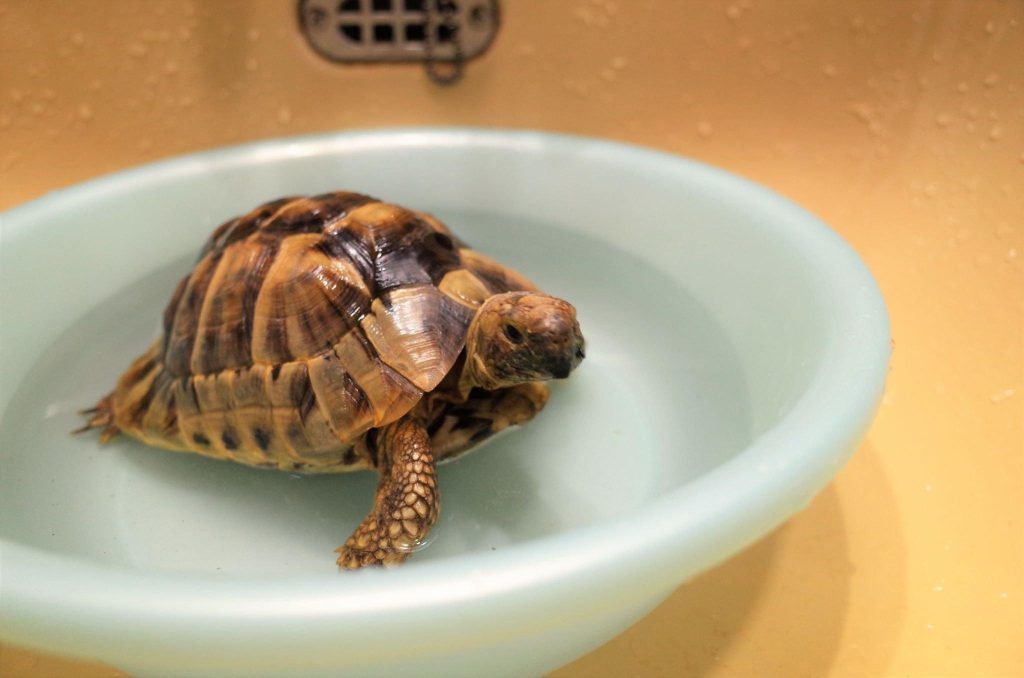
Maintaining a clean habitat and ensuring your tortoise stays hydrated are simple yet impactful ways to promote good health. A clean environment minimizes the risk of infections, while proper hydration aids in digestion and overall bodily functions.
Regular Exercise
Encouraging regular exercise by providing a spacious enclosure and time outside in a secure area can contribute to a healthy weight and robust physical health. Exercise also stimulates mental health, keeping your tortoise curious and engaged.
Stress Reduction
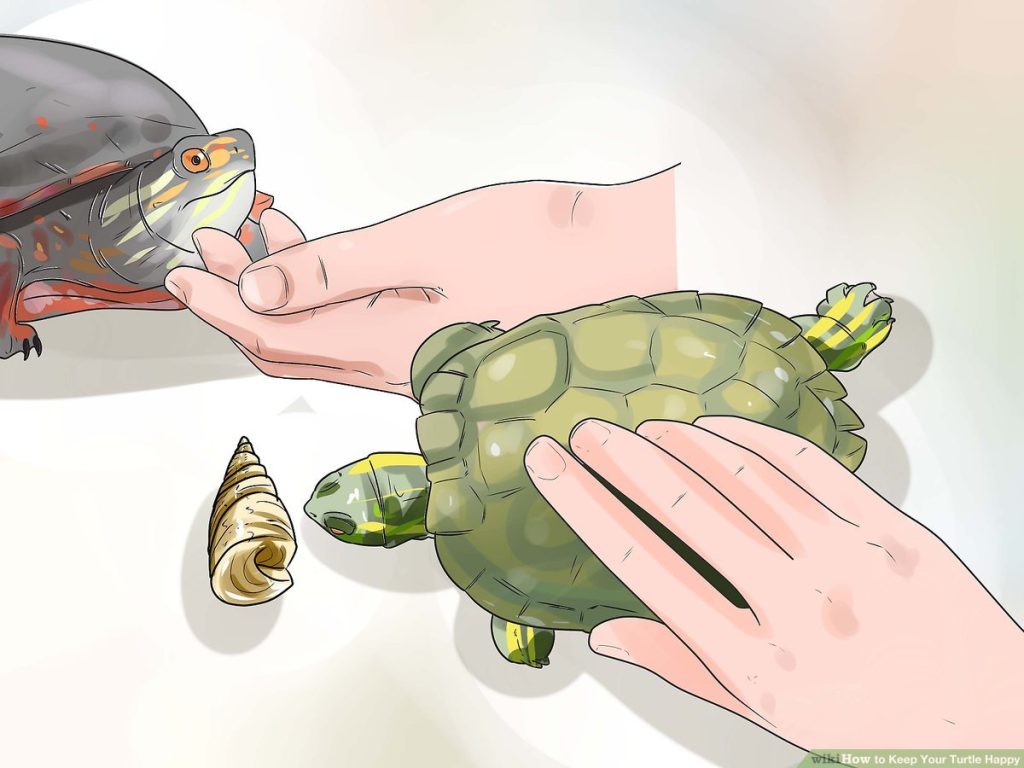
Minimizing stress by maintaining a quiet, comfortable environment and handling your tortoise gently can significantly contribute to their longevity and happiness. A stress-free life is a stepping stone to a healthy and joyful existence for your Russian Tortoise.
By embracing these timeless tips, you embark on a journey of holistic care that transcends the age factor, nurturing a bond with your Russian Tortoise that flourishes with each passing day. With every thoughtful act of care, you’re not only ensuring a healthy life for your tortoise but also enriching your shared journey through the sands of time.
Frequently Asked Questions (FAQs)
In the journey of exploring the age and ensuring the well-being of your Russian Tortoise, several questions might arise. Below are some common inquiries accompanied by concise answers to further enlighten your path of caring for your tortoise.
1. How can I tell if my Russian Tortoise is growing properly?
Proper growth in Russian Tortoises is often a reflection of a balanced diet, a suitable environment, and overall good health. Regular veterinary check-ups, monitoring weight, and shell growth, along with keeping a keen eye on their activity levels and appetite, can provide good indicators of healthy growth.
2. What are the signs of aging in Russian Tortoises?
Signs of aging in Russian Tortoises can include a decrease in activity, dulling of shell color, or a slower growth rate. However, each tortoise ages differently, and regular veterinary assessments are crucial for understanding the health and aging process of your tortoise.
3. How often should I take my Russian Tortoise for veterinary check-ups?
Regular veterinary check-ups, at least annually or bi-annually, are advisable to ensure your Russian Tortoise is in good health. More frequent visits may be necessary for older tortoises or those with existing health issues.
4. How can I make my Russian Tortoise’s habitat more age-friendly?
Creating an age-friendly habitat involves ensuring that the environment is safe, stimulating, and comfortable. Providing easy access to food and water, maintaining appropriate temperatures, and offering a secure enclosure with ample space to roam can significantly contribute to an age-friendly habitat. Also, having appropriate plants for Russian Tortoise enclosure will make it more age-friendly.
5. Can Russian Tortoises live with other tortoises or pets?
Russian Tortoises can sometimes coexist with other tortoises of similar size and temperament, given enough space. However, interaction with other types of pets can be stressful for tortoises and may pose health risks. It’s always advisable to consult with a veterinarian or a reptile specialist before introducing new animals to your tortoise’s environment.
Each question unravels a layer of understanding, bringing you a step closer to providing a nurturing and enriching environment for your Russian Tortoise. As your knowledge grows, so does the bond between you and your shelled companion, traversing through the sands of time with shared curiosity and care.
Conclusion
Unveiling the age of your Russian Tortoise unveils a narrative not just of numbers, but of enriched experiences, shared adventures, and a bond that deepens with each passing day. The age quest leads you down a path of understanding the needs and intricacies of your shelled companion, forming the cornerstone of a care routine that evolves with time. Your ability to gauge the age and cater to the specific needs of your Russian Tortoise forms a narrative of trust, ensuring a thriving life full of exploration and contentment for your tortoise.
Embarking on the journey to determine the age of your Russian Tortoise, coupled with understanding the factors affecting its growth, enables you to create a nurturing habitat for your cherished companion. By paying heed to the time-tested tips provided in this guide, you’re not just nurturing a healthy tortoise but forging a bond that stands the test of time. Your Russian Tortoise’s age is more than just a number; it’s a gateway to providing a holistic care regime that celebrates each day spent together. With each day, your knowledge enriches the tapestry of care, nurturing a bond that grows stronger with each shared sunbeam and moonbeam.
